Key takeaways:
- Climate change advocacy requires emotional connections and personal stories to inspire collective action and hope.
- Instagram serves as a powerful visual platform for storytelling, enhancing engagement and fostering a global movement for sustainability.
- Creating engaging content involves understanding the audience, using captivating captions, and incorporating diverse formats to maintain interest.
- Building a supportive online community emphasizes genuine connections, mutual support, and highlighting the contributions of others in the advocacy space.
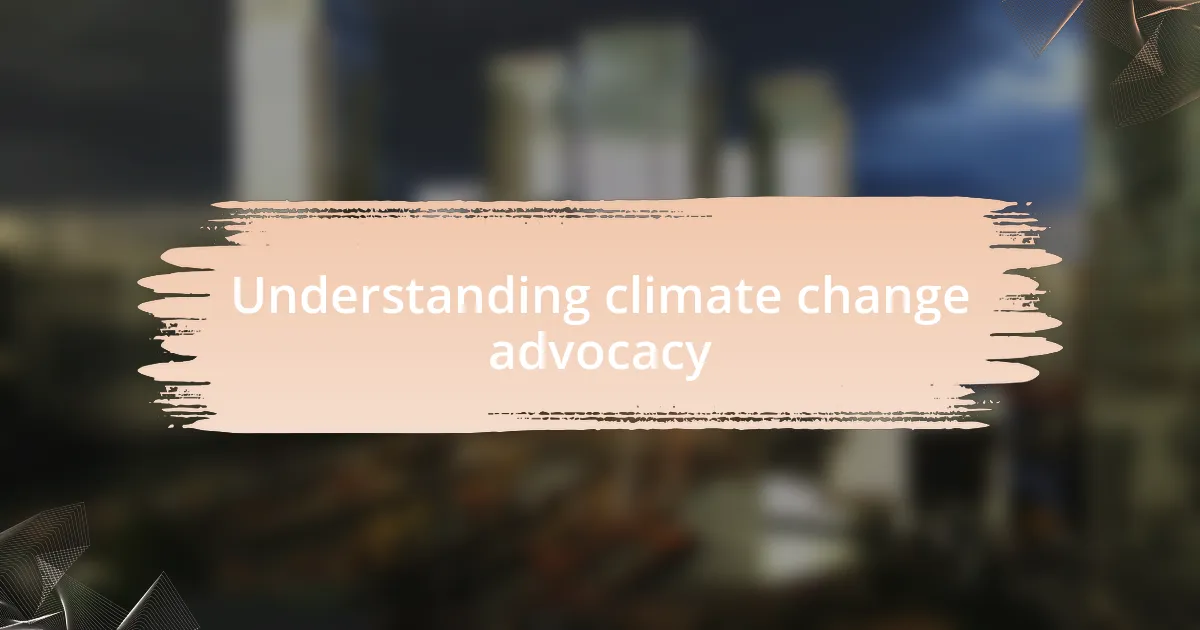
Understanding climate change advocacy
Climate change advocacy is about more than just voicing concerns; it’s about mobilizing individuals and communities to take concrete actions. When I first started engaging with this issue, I realized it wasn’t enough to simply share alarming statistics. I had to translate that urgency into local actions, like organizing community cleanups or educating friends about sustainable practices.
I’ve often wondered, what truly motivates people to take action? For me, it was witnessing the effects of climate change firsthand during a trip to a coastal town affected by rising sea levels. The local fishing community was stripped of its livelihood, leaving families in distress. This experience ignited a passion in me to not only advocate for change but to connect with others on a personal level, sharing their stories and struggles.
Emotional connections are essential in climate change advocacy. It’s about fostering a sense of shared responsibility and urgency that encourages others to act. I often find myself asking, how can we, as advocates, inspire hope rather than despair? By focusing on solutions and success stories, we can create a movement where every person’s voice contributes to the larger narrative of our planet’s future.
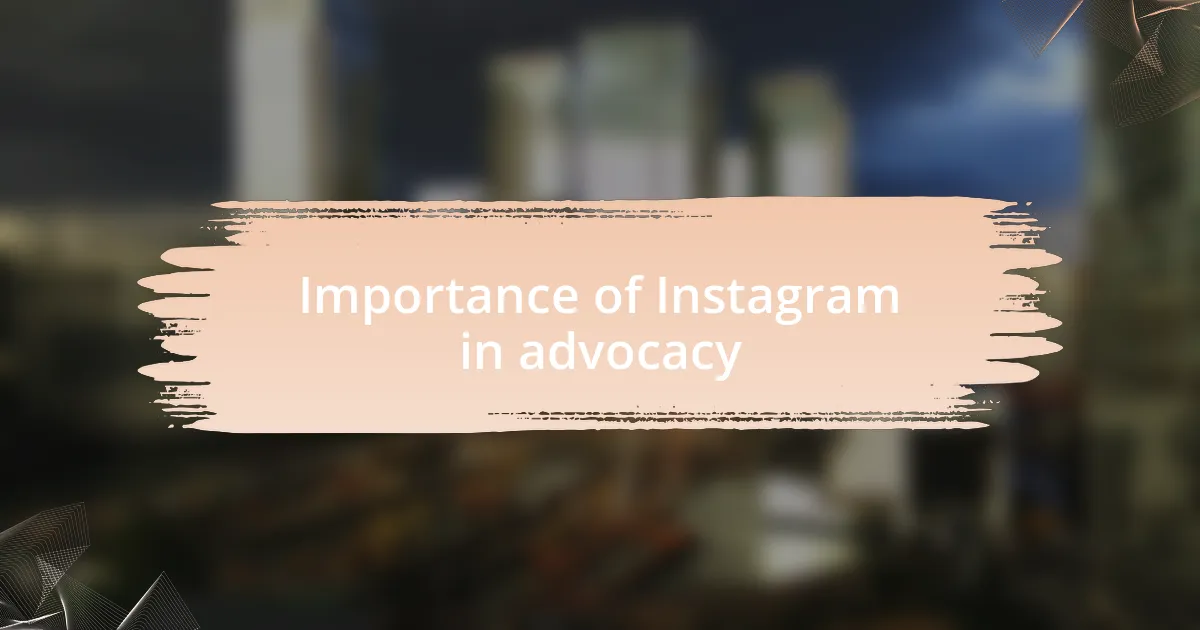
Importance of Instagram in advocacy
Instagram plays a pivotal role in climate change advocacy by providing a visual platform that amplifies messages quickly and effectively. I remember posting a photo of a local beach cleanup; the vibrant images of volunteers picking up trash drew immediate attention, sparking conversations in my community. This instantaneous engagement showed me how compelling visuals could transcend words and inspire action.
What truly struck me was the power of storytelling through images on Instagram. When I shared a before-and-after photo of a polluted area transformed into a community garden, it generated a wave of interest and support. It made me realize that we can motivate others not just by sharing facts but by showcasing tangible results. How can we harness this power to paint a more hopeful picture of our planet’s future?
The platform also enables diverse voices to emerge, enriching the advocacy landscape. I’ve connected with individuals from around the world, each sharing their unique experiences and campaigns. It’s heartening to see young activists wielding Instagram to create change, reminding me that we are part of a global movement for our planet. Isn’t it inspiring to think that just a simple post can contribute to an international dialogue on sustainability?
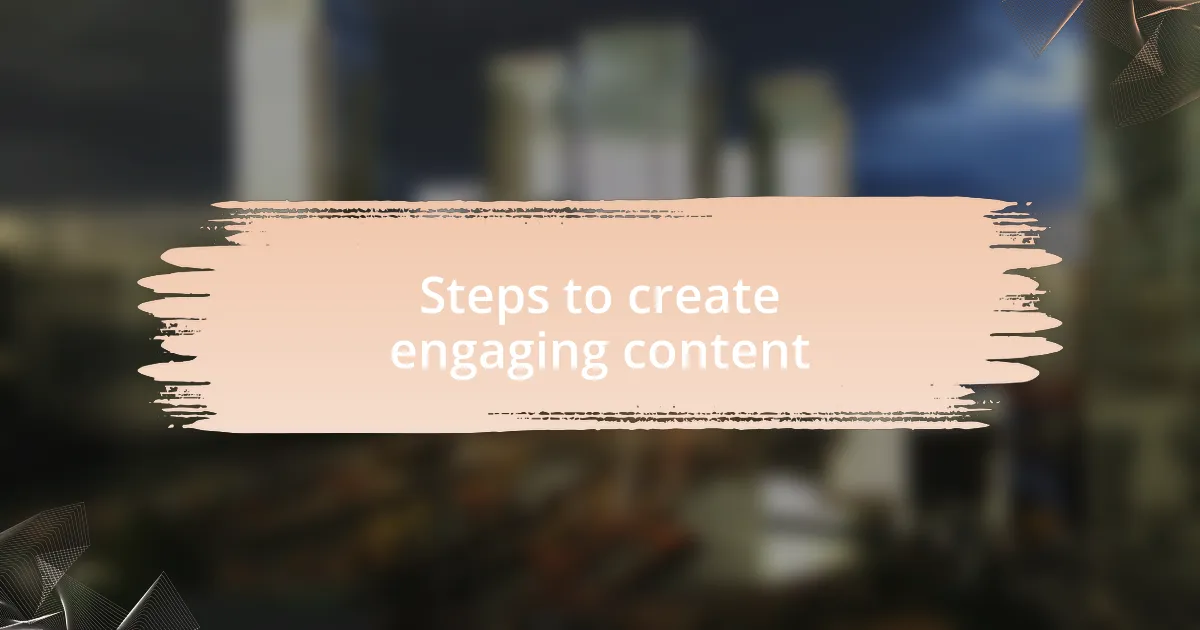
Steps to create engaging content
When creating engaging content on Instagram, the first step is to understand your audience. I often analyze my followers’ preferences based on past interactions with my posts. By recognizing what resonates with them, whether it’s a striking visual of a local wildlife habitat or a thought-provoking quote, I can tailor my content to ignite genuine interest.
Additionally, utilizing captivating captions enhances the connection between the image and the message. I remember crafting a caption for a photo of a disheartening beach littered with plastic bottles, which read, “Every piece of litter has a story. What story will you write today?” This kind of prompt not only encourages participation but also provokes introspection. Are we, as advocates, inviting our audience to join a larger conversation, or are we merely broadcasting a message?
Incorporating varied content formats, like Reels or Stories, can also keep your followers engaged. I recently experimented with a short video that showcased my daily eco-friendly habits. The response was overwhelmingly positive, with many followers sharing their own tips in the comments. Isn’t it fascinating how a simple shift to a dynamic format can foster community involvement and deepen our collective commitment to climate action?
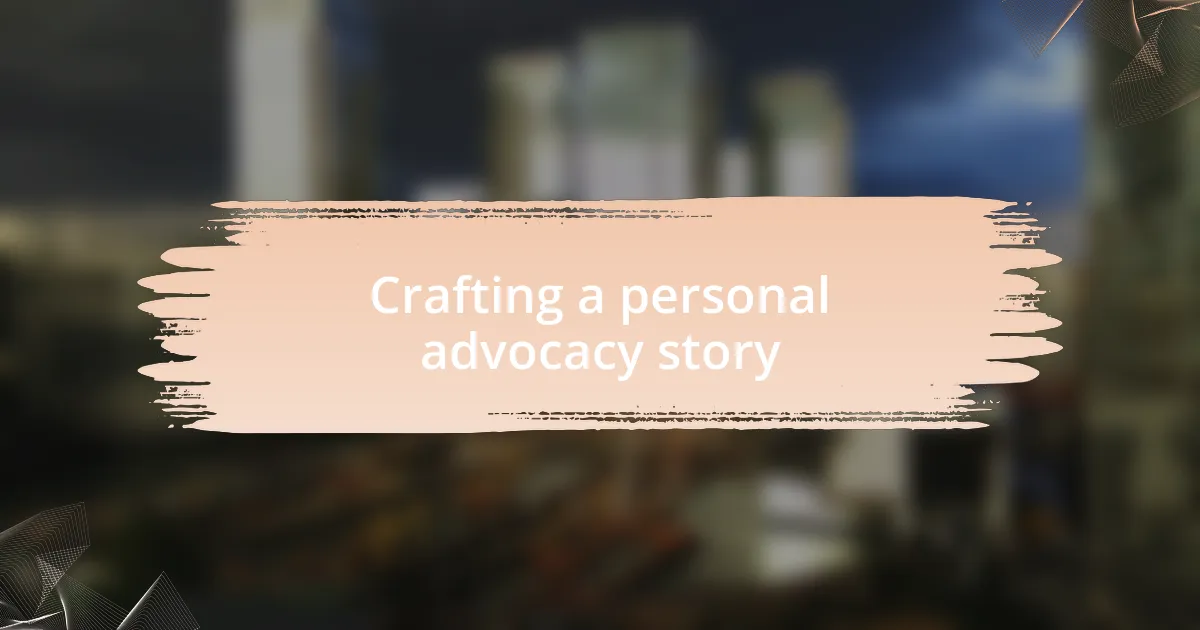
Crafting a personal advocacy story
Crafting a personal advocacy story hinges on authenticity. When I began sharing my journey, I focused on experiences that shaped my understanding of climate issues. I vividly recall a moment during a hike when I stumbled upon a pristine lake marred by pollution. That experience ignited a passion in me and led to a realization: personal stories resonate far more powerfully than mere statistics.
The power of storytelling lies in its ability to evoke emotions. I once posted about my childhood love for the ocean, only to later learn about the devastating impacts of rising sea levels on marine life. Sharing my emotional connection to the sea helped my audience see the issue from a personal angle. By weaving in these experiences, I aim to show my followers that climate change isn’t just statistics; it’s about preserving the beauty of our world for future generations.
As I reflect on my advocacy journey, I often ask myself: How can I inspire change through my narrative? It makes me deliberate about which moments to share. Whether it’s a success in reducing waste or a setback in my sustainability efforts, every experience is a chance to connect and encourage others to take action. After all, isn’t advocacy most powerful when it feels personal?
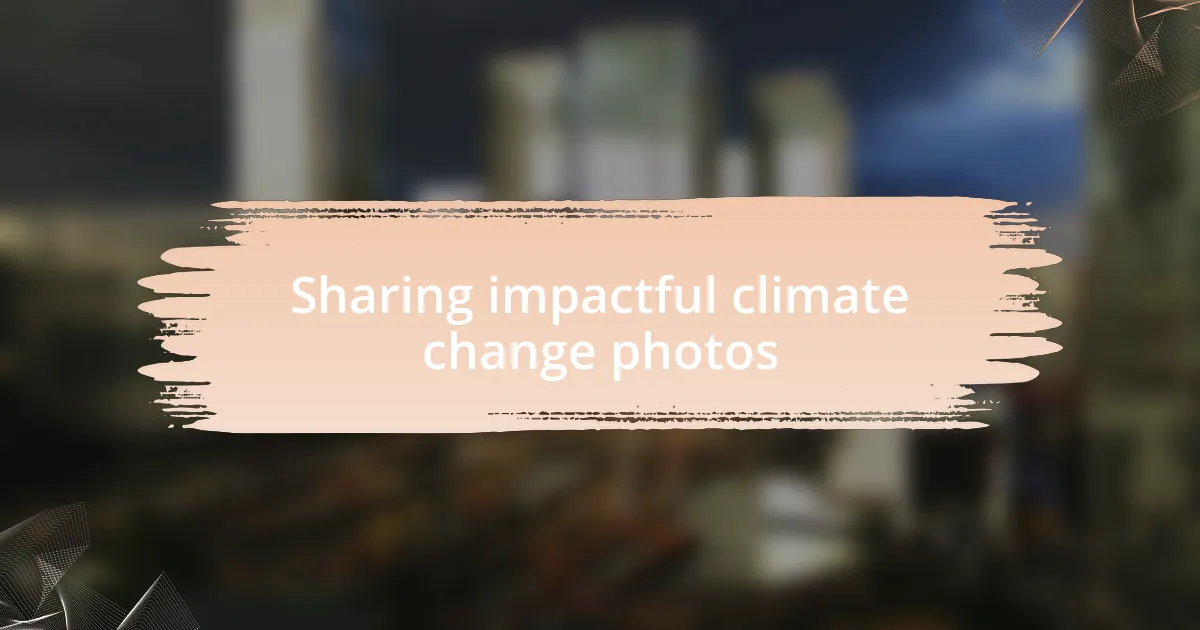
Sharing impactful climate change photos
Sharing impactful climate change photos can ignite conversations and foster a sense of urgency. I remember capturing an image of a barren landscape where once a lush forest stood—it left me pondering, “What will it take for us to truly appreciate what we’re losing?” That stark contrast sparked dialogue among my followers, reminding us all that visual storytelling holds the power to drive home the gravity of climate change.
When I posted a photo of a beach littered with plastic after a community clean-up, it resonated deeply with many. The image not only highlighted our pollution crisis but also showcased collective efforts to reclaim our environment. I found that my audience was inspired to join local initiatives, prompting me to wonder: can one image really catalyze action? In my experience, it absolutely can.
Each photo I share is more than just a snapshot; it’s a moment crystallized in time, capturing the heartbeat of our planet. Recently, I shared a picture of a small community garden thriving amid urban development. It whispered hope and resilience, reminding us that positive change is possible. In reflecting on these shared images, I encourage others to see their own power in storytelling—how might your captured moments inspire transformative conversations around climate change?

Building a supportive community online
I’ve discovered that building a supportive online community revolves around genuine connections that amplify our collective voices. I recall hosting a virtual event where I invited followers to share their own climate stories. The overwhelming response opened my eyes to diverse experiences, with each narrative reinforcing the notion that we’re not alone in this fight. Isn’t it powerful to realize that each of us contributes to a larger tapestry of advocacy?
Engagement is key. When I respond to comments or participate in discussions, I feel like I’m nurturing a garden of ideas and emotions. A follower once shared how a simple post inspired them to reduce their plastic use dramatically. Their enthusiasm reminded me that every small interaction can empower others to take meaningful action. How can we collectively harness that energy to fortify our community?
Additionally, I often highlight others’ work, showcasing their efforts and achievements in the climate space. This not only recognizes their contributions but also creates an environment where everyone feels valued and seen. I believe that fostering mutual support encourages a ripple effect, as each acknowledgment inspires further creativity and commitment. How might we elevate each other to create a stronger, united front in the climate change movement?